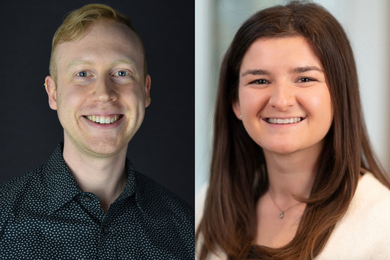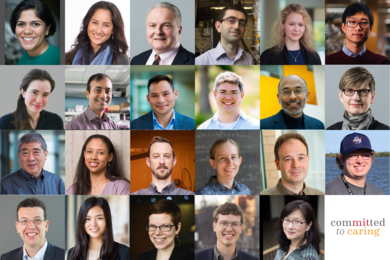To mark National Mentoring Month in January, US Black Engineer & Information Technology magazine's online edition published a series of articles about outstanding mentors and prot���g���s. The Jan. 23 issue featured an interview with Paula T. Hammond (S.B. 1984, Ph.D.), associate professor of chemical engineering and one of several faculty members involved in planning and writing the proposal for the Institute for Soldier Nanotechnologies. An edited version of the article by Lango Deen is reprinted below with permission.
Q. Whom do you mentor?
I'm very active with informal and formal mentoring of African-American students and women students on and off campus. For example, I speak to advise and encourage the African-American students at MIT, attend and give forums, and appear on panels that address career issues and issues of work and family. I've been working at my church, St. Paul A.M.E. in Cambridge, as a volunteer in its Math -Science Academy.
Q. Who helped you become who you are today?
My parents influenced me greatly, because they upheld the idea of education and the pursuit of knowledge as a principle. They upheld the idea of hard work, of excellence. There was never a question of whether I would go to college; there was never a question regarding my access to any profession. My parents' support, their belief that their children were gifted, could accomplish things in the world, resonated with me and my brother.
In elementary and high school, I was interested in all things. I was thinking about being a writer and even entered a literary contest once. Then I took chemistry in high school. I really enjoyed chemistry, and she [the teacher] told me I really should think about science careers and told me about chemical engineering specifically. So I talked to my parents.
My father, who had always been rooting for me and my brothers to go into some chemistry-related field, was a Ph.D. biochemist and directed the health laboratories for the city of Detroit. My mother was a nurse and the dean and founder of a major nursing college in Detroit. I remember they connected me with some of the black engineers they knew.
Q. Tell us about your work.
In the field of nanotechnology, we look at how we can control the chemistry and physical properties of a material by controlling the way the material is structured, and that structure goes down to nanometer-length scale.
As a professor, I run a research group of doctoral students and research scientists who work on nanostructured materials for biomedical, power and display applications.
There are a couple of examples of drug delivery systems that we're working on. One of them involves a polymer that orders in solution to form tiny, nanoscale containers that can be used to deliver drugs inside the body. The outside of the container can be labeled so it can be guided directly to the cells to which the drug is meant to be delivered.
We also create a number of unique ultrathin films, for which we can control the composition down to the tens of nanometers, by introducing multiple molecule-thick layers of different polymers, one layer at a time. This work could lead to ultra-lightweight fuel cells which power everything from your cell phones to your computer.
Q. What is your secret for work-life balance?
I love my job; it's always interesting and exhilarating, though it requires work and has its own frustrations. I've always been excited to be at MIT, and I like the idea that I can be a role model for other African-American men and women.
As a working mother and as a single parent for a time, I've found it important to use every resource available to me--friends, family, hired professionals--to make it possible to be a good mother and parent while being able to pursue my goals in academia. I've found ways to cope with work and family through manipulating my schedule and bringing work home. In general, it's the support of those around you that's critical. I've always found that in my husband, friends, colleagues and family.
A version of this article appeared in MIT Tech Talk on February 11, 2004.






